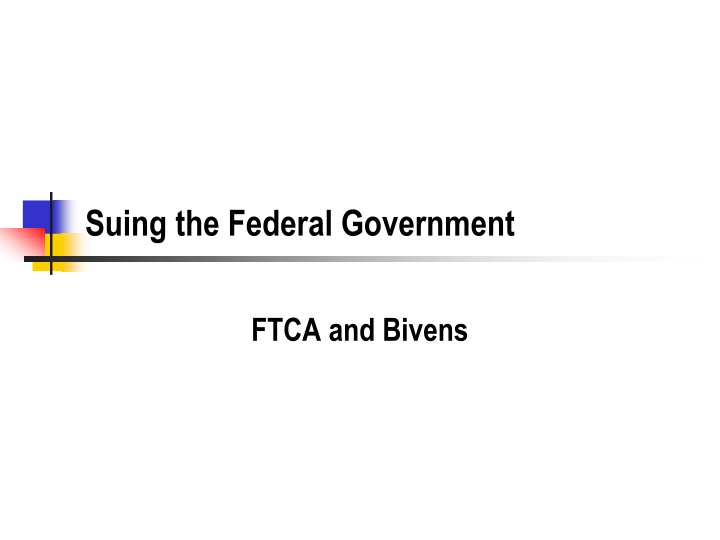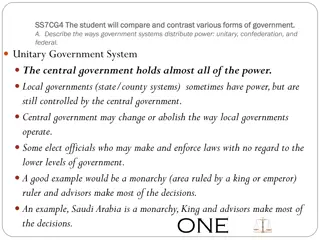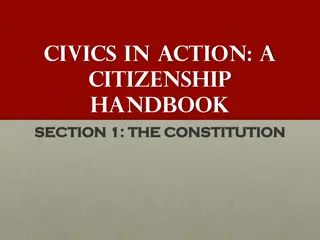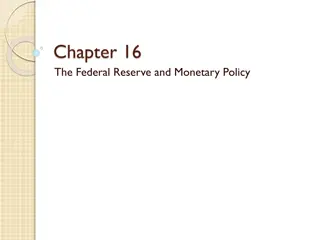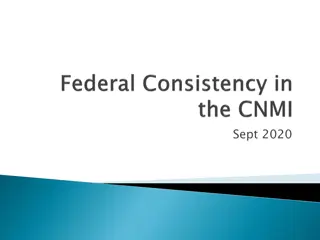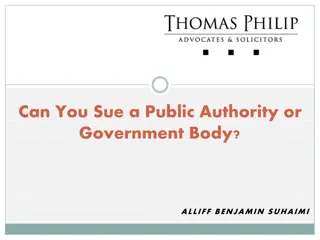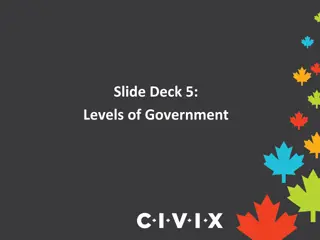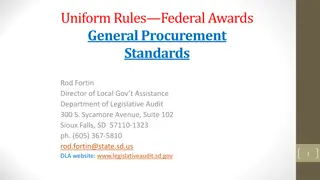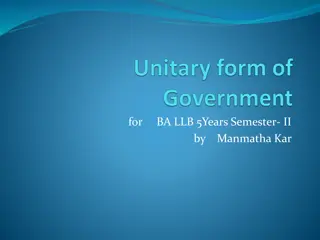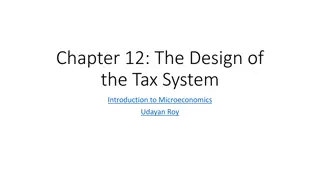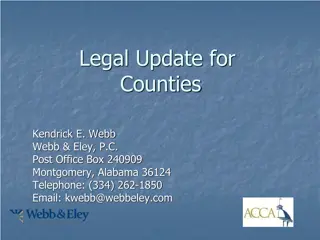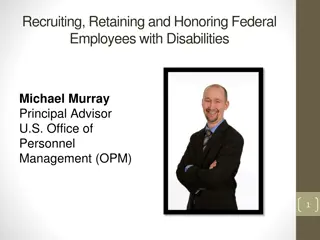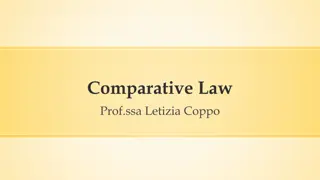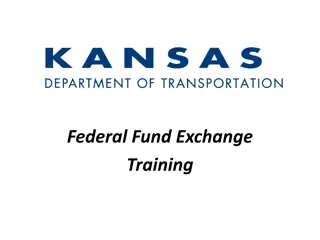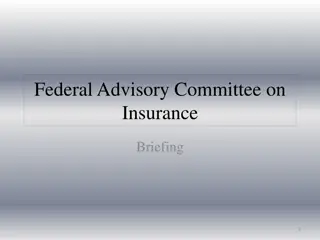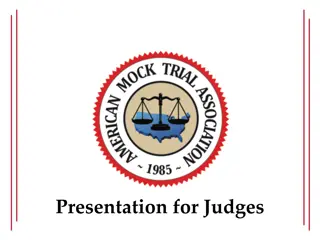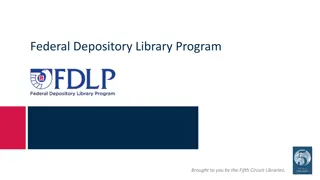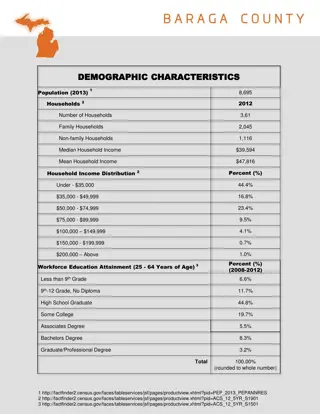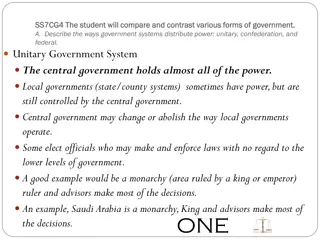Overview of Suing the Federal Government: FTCA and Bivens
This informative content delves into the history of sovereign immunity in the U.S. Constitution, the formation of the Court of Claims in 1855, its jurisdiction over contracts and takings, the Federal Tort Claims Act (FTCA), and a specific case involving negligence by the United States in the shipment of fertilizer. It provides insights into the complexities of suing the federal government under different legal frameworks.
Download Presentation

Please find below an Image/Link to download the presentation.
The content on the website is provided AS IS for your information and personal use only. It may not be sold, licensed, or shared on other websites without obtaining consent from the author.If you encounter any issues during the download, it is possible that the publisher has removed the file from their server.
You are allowed to download the files provided on this website for personal or commercial use, subject to the condition that they are used lawfully. All files are the property of their respective owners.
The content on the website is provided AS IS for your information and personal use only. It may not be sold, licensed, or shared on other websites without obtaining consent from the author.
E N D
Presentation Transcript
Suing the Federal Government FTCA and Bivens
History Traditional Sovereign Immunity US Constitution "No Money shall be drawn from the Treasury, but in Consequence of Appropriations made by Law." U.S. Const. art. I, 9. All compensation had to be by private bills What problems do private bills pose? 2
Formation of the Court of Claims 1855 Administrative tribunal to review claims and make recommendations to Congress Later Congress made the decisions binding Not an Art III court Like bankruptcy courts Appeal to the Federal circuit and the United States Supreme Court 3
Court of Claims Jurisdiction Contracts, tax refunds, takings Not torts Recently some court of claims judges are transforming takings law into tort law. After the failure of the FTCA case involved MRGO, a Court of Claims judge used the same evidence to find a taking. This is still in progress 4
Federal Tort Claims Act Went into effect in 1945 All torts were private bills before then Tied up Congress and encouraged corruption Provides an administrative compensation for certain tort injuries. Looks to the law of the state where the tort occurred for the standards for the tort We will discuss FTCA procedure later. 5
Dalehite v. U.S., 346 U.S. 15 (1953) Texas City Disaster http://www.local1259iaff.org/disaster.html Why is the TVA producing ammonium nitrate fertilizer? What are other uses of ammonium nitrate? Why are we shipping fertilizer to Europe post World War II? 6
The General Claim The negligence charged was that the United States, without definitive investigation of FGAN properties, shipped or permitted shipment to a congested area without warning of the possibility of explosion under certain conditions. LNG terminals? The District Court accepted this theory. 7
Specific Findings by the Trial Court the Government had been careless in drafting and adopting the fertilizer export plan as a whole, specific negligence in various phases of the manufacturing process, and those which emphasized official dereliction of duty in failing to police the shipboard loading. Classic private tort negligence claims. 8
The Statutory Defense (a) Any claim based upon an act or omission of an employee of the Government, exercising due care, in the execution of a statute or regulation, whether or not such statute or regulation be valid, or based upon the exercise or performance or the failure to exercise or perform a discretionary function or duty on the part of a federal agency or an employee of the Government, whether or not the discretion involved be abused. 9
What is the Intent of this Provision? What is a discretionary function? Why do we limit claims based on government decisionmaking? What are the consequences for allowing litigants to challenge government polices? How does this mirror juridical review of rules and adjudications? What is the remedy for bad decisions? What about compensation? 10
The United States Supreme Court Ruling What did the United States Supreme Court rule about the government's actions in this case? 11
Allen v. United States, 816 F.2d 1417 (10th Cir. 1987) In 1950 the AEC chose an area in Nevada as a testing site. The President approved this choice. Thereafter, between 1951 and 1962, eight series of open-air tests were conducted, with the President approving each series of tests. Over one hundred atomic bombs were detonated. Each test explosion was executed according to detailed plans which the AEC officially reviewed and adopted. Separate plans for protecting the public, and for providing the public with appropriate information, were also adopted by the AEC. 12
What are the Plaintiffs Claims? At trial, as a basis for governmental liability, plaintiffs singled out the alleged failure of the government, especially of the Radsafe Officers and the Test Information Officers, to fully monitor offsite fallout exposure and to fully provide needed public information on radioactive fallout. 13
What Facts did the Trial Court Find? ...the trial court found that the people who designed the downwind safety program deviated from optimum practices based on the best available scientific knowledge. ...the trial court found the following deviations in the plans which would clearly support liability for injury under standard tort analysis as applied by the trial court: the decision to monitor randomly rather than on a "comprehensive, person- specific basis, decisions not to use thyroid or whole body counters decisions regarding the limited extent of urine, fecal, and blood sampling the decision not to test milk samples "in order to avoid arousing public concern, the decisions to forego internal fallout assessment from inhalation of fallout particles decisions regarding the extent of follow-up monitoring in downwind communities et.c. for several more findings. 14
What was the District Courts Legal Holding? Again, on a fully supported record, the trial court found that these departures from accepted safety standards were the proximate cause of suffering and death from cancer in many of the plaintiffs. Under the then-available legal precedents, the trial court reasonably concluded that the FTCA showed Congress's intent that the Government, which benefited from the testing, should bear these particular costs. 15
What was the Governments Defense? Did the government deny that they caused any injuries? Was this an accident? What did the government intend to do? What was the public policy trade-off? National security? Cost-benefit? How does this presage Mathews? Is intentionally putting the public at risk, or even injuring the public, a protected discretionary function? 17
Polio Vaccine Salk vaccine Dead virus - supposedly Sabin vaccine Live, attenuated vaccine Gives a mild infection Can spread to others - which is good What if someone is immunosuppressed? 19
Cutter Incident During the first wave of vaccinations when the vaccine became available in 1955 Some vaccine was not killed and children became infected Remember, there is still polio in the community at this time First vaccine litigation Real injuries, but a real benefit 20
Post Cutter Incident Undermined confidence in vaccines 1965 - 402 A made vaccine cases easier to prove There was some natural spread from Sabin virus 21
Swine Flu 1974-75 flu season New strain of flu that was thought to resemble the 1918-1919 Spanish Influenza Feds did a massive vaccine campaign Companies demanded immunity for lawsuits Congress let plaintiffs substitute the feds as plaintiff, and allowed strict liability theories 22
Swine Flu - Legal Consequences Huge incentive to find injuries Diagnosis of Guillain-Barre syndrome was ambiguous No lab test vague finding in all but the extreme cases Docs were encouraged to make the diagnosis Maybe the first big injury case where plaintiff's attorneys shaped the epidemiology and perception of the disease Berkovitz happened in this climate - 1979 23
Berkovitz by Berkovitz v. U.S., 486 U.S. 531 (1988) What was the product in Berkovitz? What did the FDA regulations require? What did the plaintiffs claim the FDA failed to do? What was the FDA s defense? 24
Varig Airlines (in Berkovitz) What was the injury in Varig Airlines? What did the enabling act require the agency to do? What did the regs require? How are the regs in Berkovitz different from those in Varig Airlines? 25
Agency Liability Why was the FDA liable in Berkovitz? How could the FDA have worded the regulations to avoid this sort of liability? Why might that have raised a red flag during notice and comment? 26
Epilog National Vaccine Injury Compensation Act Autism Scam Based on fraudulent research Tries to get around the act by blaming the preservative Attacks on adult vaccines like anthrax Undermined the mandatory immunization system 27
Causes of Action under the FTCA - Sec 2672 The head of each Federal agency ... may consider, ascertain, adjust, determine, compromise, and settle any claim for money damages against the United States for injury or loss of property or personal injury or death caused by the negligent or wrongful act or omission of any employee of the agency while acting within the scope of his office or employment, under circumstances where the United States, if a private person, would be liable to the claimant in accordance with the law of the place where the act or omission occurred 29
Limitations on Liability - Sec 2674 The United States shall be liable, respecting the provisions of this title relating to tort claims, in the same manner and to the same extent as a private individual under like circumstances, but shall not be liable for interest prior to judgment or for punitive damages. If, however, in any case wherein death was caused, the law of the place where the act or omission complained of occurred provides, or has been construed to provide, for damages only punitive in nature, the United States shall be liable for actual or compensatory damages, measured by the pecuniary injuries resulting from such death to the persons respectively, for whose benefit the action was brought, in lieu thereof. [When the FTCA was passed, dead people were not worth much in many states.] 30
Exceptions to the FTCA - 28 USC Sec 2680 http://biotech.law.lsu.edu/cases/immunity/ftca_exceptions.htm (h) originally did not include this language: Provided, That, with regard to acts or omissions of investigative or law enforcement officers of the United States Government, the provisions of this chapter and section 1346(b) of this title shall apply to any claim arising, on or after the date of the enactment of this proviso, out of assault, battery, false imprisonment, false arrest, abuse of process, or malicious prosecution. For the purpose of this subsection, "investigative or law enforcement officer" means any officer of the United States who is empowered by law to execute searches, to seize evidence, or to make arrests for violations of Federal law. 31
Bivens v. Six Unknown Named Agents, 403 U.S. 388 (1971) Bivens recognized that there is a direct action against federal employees for violations of constitutional rights not covered by the FTCA. Bivens is a personal action, not an official capacity action. No vicarious liability. You must show supervisors know and support the actions that cause the injury. 32
2680(h) - intentional torts by police officers - revised after Bivens Has become a substitute for a Bivens action for covered officers. When would a Bivens action still be possible for intentional torts? Remember there are other employees whose intentional torts are not covered by the FTCA. A recent case allows a Bivens action against federal medical personnel in a detention center for conscious indifference to a prisoner s medical needs. 33
Administrative Procedural Requirements - Sec 2675 An action shall not be instituted upon a claim against the United States for money damages for injury or loss of property or personal injury or death caused by the negligent or wrongful act or omission of any employee of the Government while acting within the scope of his office or employment, unless the claimant shall have first presented the claim to the appropriate Federal agency and his claim shall have been finally denied by the agency in writing and sent by certified or registered mail. 34
What if the Agency Does Not Act on the Claim? The failure of an agency to make final disposition of a claim within six months after it is filed shall, at the option of the claimant any time thereafter, be deemed a final denial of the claim for purposes of this section. 35
Filing a Claim is Jurisdictional This is an administrative compensation scheme, so it is subject to exhaustion of remedies You file a claim with the agency with 2 years of the accidence You can only go to court after the agency rules on the claim or after six months "The failure of an agency to make final disposition of a claim within six months after it is filed shall, at the option of the claimant any time thereafter, be deemed a final denial of the claim for purposes of this section." If you do not comply with this requirement, your case will be dismissed, and if the 2 years has elapsed, you will be prescribed. 36
Suing the Military Exception to FTCA (j) Any claim arising out of the combatant activities of the military or naval forces, or the Coast Guard, during time of war. Civilians can sue subject to this exception Activity duty military Feres v. U.S., 340 U.S. 135 (1950) Cannot sue military provides its own comp system Would undermine military discipline 37
